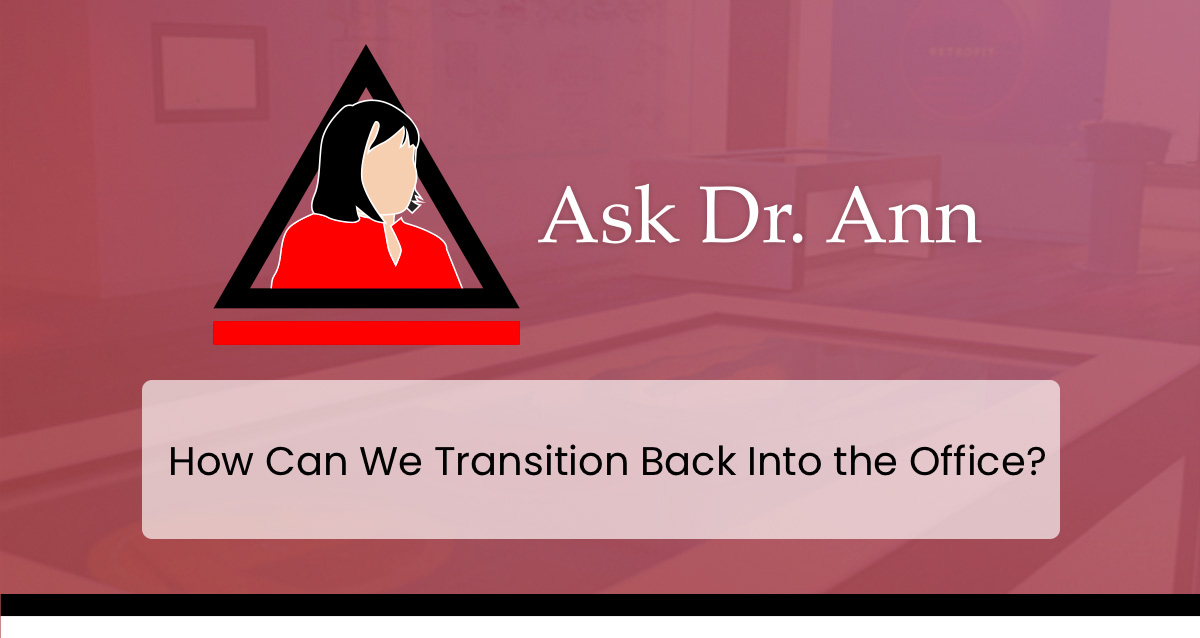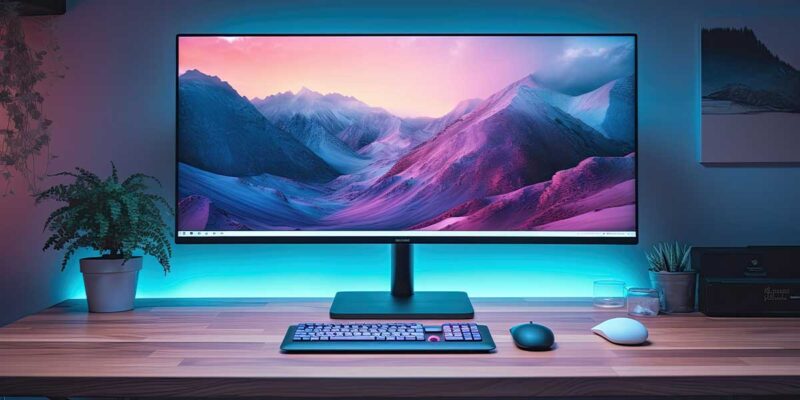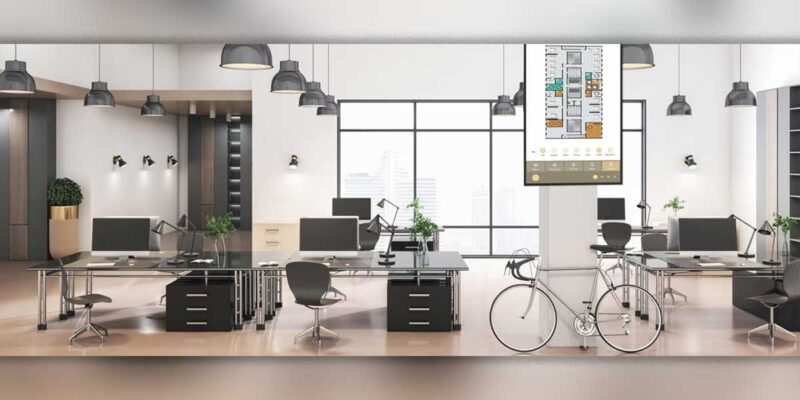Ask Dr. Ann: How Can We Transition Back Into the Office?

With all the changes taking place as a result of the pandemic, what do you recommend organizations consider to successfully transition back to the office?
Transitioning back to the office requires more than logistics and out-of-the-box video solutions.
- It requires quantifying employee and client needs and exploring communications options for sharing information and collaborating at any time from anywhere, internally and externally.
- It means addressing the psychology of returning to work and the development of policies and goals to be effective, as well as the tools to manage these policies.
- It means helping people embrace communication and collaboration technologies and choosing tools that complement the work and communication styles of both individuals and teams, as well as customers.
- Adoption, comfort and end-user proficiency will play key roles in the efficacy of technology in the workplace and its ability to move forward in a post-pandemic global work environment.
Returning to Work
There is a need to modify building strategies to allow work culture and employee interaction to evolve within the constraints of the “new normal.”
Office planners are working on a new workplace with new cubicle designs, meeting areas, upgraded ventilation systems and touchless everything (elevator buttons, door entrances, faucets, etc.).
Organizations have had to accelerate digital transformation and scale up collaboration tools for remote work, improve security capabilities, equip the workforce with laptops and other productivity devices and strengthen networking and communications infrastructure.
Organizations need to develop a purposeful plan to equip people with tools to support work from home in a standard way that can be supported by the organization.
Implementing a Workable Plan
The post-pandemic workplace will be different from what most people are used to, with new policies and practices that must be communicated to all employees. It is important to adopt an iterative design approach that implements and analyzes success over time to incorporate corrections and modifications as needed.
Returning to work may take time and may require subsequent closings and openings, given that the pandemic may continue to impact different locations in many ways, and that the current pandemic may only be the beginning of future pandemics. Having a plan now will allow organizations to maintain good productivity and efficiency as conditions continue to morph and evolve.
How to Get Started
Since different departments will have a vested interest in setting back-to-work policies, it is recommended a team be formed to ensure input from everyone. There needs to be a system set up to collect data from all employees interested in the process. The data collected will form the basis for an effective, comprehensive re-entry and operational plan.
Once a plan is developed, it must be communicated to all employees. The plan should be implemented, measured and evaluated since changes will have to be made as the process is deployed and tested. The new workplace environment is an investment in productivity, employee well-being, and profitability. Simplicity and deployment flexibility are important for interoperability, which provides value and drives usage.
Employees need to work where they are most comfortable and productive. Choosing the right set of technologies and tools for each user group is critical — one size does not necessarily fit all.
Proper training, user comfort and clarity of expectations will facilitate greater overall success for all participants.
Space Design and Repurposing
The design and layout of the workplace may need to be adjusted to adhere to social distance regulations and health guidelines.
New strategies may dictate that the current space may have to be revised to include signage and one-way navigation, protective screens, dividers and a new furniture layout.
Repurposing and reconfiguring spaces with existing technology, or adding technologies and tools to nonconventional workspaces, must be considered. In a hybrid work-from-home, work-from-work model communal tables and cube farms may be more valuable as socially distanced, open ad hoc meeting and collaboration space.
Workplace Technology
AV and IT provide the workplace technology backbone and tools to help people do their jobs and get the most out of the building.
Personal Solutions
One way to make transitioning back to work easier is to consolidate to fewer collaboration tools. This will make it easier to use the same features to communicate, help reduce the number of places to check for incoming messages and make training and maintenance easier. This will help simplify connectivity and make it easier to work as a team. The use of personal and mobile technologies will also play a role in communicating with employees and connecting remotely to meetings. Strategies for internal and external communications will need to be updated and promoted to employees.
Group Solutions
Addressing issues with the current pandemic, and being prepared for the next health incident means the following:
- Shared equipment is no longer a viable option without strict cleaning and sanitation measures. BYOD (Bring Your Own Device) solutions will become the norm for use in collaboration rooms and spaces.
- The use of meeting spaces will require reservations with contact information for anyone using the spaces.
- Spaces will have to be locked and managed to prevent people from dropping in without registering.
- Organizations will have to evaluate new types of meeting spaces and consider repurposing existing meeting rooms. This includes conference rooms, open workspaces, shared offices, huddle rooms, and phone booth-sized spaces. It is expected these spaces will be used more frequently due to the increased adoption of video conferencing and collaboration, and the need for social distancing.
- Given the huge growth in demand for video meetings and collaboration, including the need for interoperability, it is important that video meetings and collaboration be easy for anyone to host and join, and the technology behind these meetings should just work and complement communication styles between parties.
The Future
The future is now. Technology will play a central role in maximizing the effectiveness of the building and helping employees remain safe and effective at their job.
The success of going back to work will be determined by the quality of implementation and execution over a sustained period of time. It will require an approach that keeps people safe and provides them with the business tools needed to work as effectively as they did before.
The goal is a safe environment where people can collaborate with one another, achieve the objectives of the organization and enjoy work.





